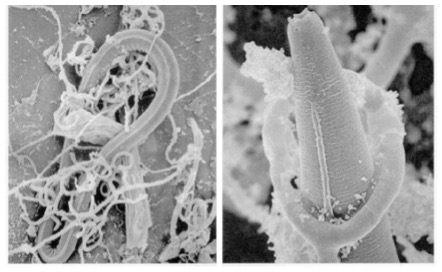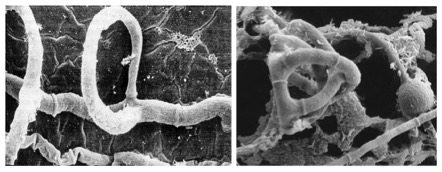An Upcoming Biological Tool and Alternative to Commercial Dewormers
go.ncsu.edu/readext?448349
en Español / em Português
El inglés es el idioma de control de esta página. En la medida en que haya algún conflicto entre la traducción al inglés y la traducción, el inglés prevalece.
Al hacer clic en el enlace de traducción se activa un servicio de traducción gratuito para convertir la página al español. Al igual que con cualquier traducción por Internet, la conversión no es sensible al contexto y puede que no traduzca el texto en su significado original. NC State Extension no garantiza la exactitud del texto traducido. Por favor, tenga en cuenta que algunas aplicaciones y/o servicios pueden no funcionar como se espera cuando se traducen.
Português
Inglês é o idioma de controle desta página. Na medida que haja algum conflito entre o texto original em Inglês e a tradução, o Inglês prevalece.
Ao clicar no link de tradução, um serviço gratuito de tradução será ativado para converter a página para o Português. Como em qualquer tradução pela internet, a conversão não é sensivel ao contexto e pode não ocorrer a tradução para o significado orginal. O serviço de Extensão da Carolina do Norte (NC State Extension) não garante a exatidão do texto traduzido. Por favor, observe que algumas funções ou serviços podem não funcionar como esperado após a tradução.
English
English is the controlling language of this page. To the extent there is any conflict between the English text and the translation, English controls.
Clicking on the translation link activates a free translation service to convert the page to Spanish. As with any Internet translation, the conversion is not context-sensitive and may not translate the text to its original meaning. NC State Extension does not guarantee the accuracy of the translated text. Please note that some applications and/or services may not function as expected when translated.
Collapse ▲A nematode-trapping microfungus, Duddingtonia flagrans has been shown to survive and maintain its viability while passaging through the gastro-intestinal tract of livestock. The fungus then germinates and spreads rapidly on freshly deposited fecal pellets by producing specialized structures that trap barber pole and other nematode larvae when they emerge from the feces. Once the larvae are trapped, they are unable to migrate out of the fecal mass and up to grass blades to be consumed by the grazing animal. The larvae are eventually killed through digestion by specialized enzymes produced by the fungus. Studies have shown that the fungus trapping structures developed in the 50 to 95 F temperature range.
 Thus, this fungus has the potential to break the life cycle of nematode parasites by capturing infective larvae before they migrate from dung to pasture, where they would otherwise be ingested by grazing animals.
Thus, this fungus has the potential to break the life cycle of nematode parasites by capturing infective larvae before they migrate from dung to pasture, where they would otherwise be ingested by grazing animals.
The main goal of using D. flagrans is for long term reduction of pasture contamination. The fungus has no anthelmintic effect on adult gastrointestinal tract nematodes in the animal.
The company that had initially developed and promoted the product, Hansen Biosystems from Denmark, terminated production some years back. International Animal Health, however, an Australian company, continued to pursue studies in efforts to re-establish D. flagrans as a viable commercial product. After years of refining the process, their new product has been tested under laboratory and field conditions. The results have shown excellent control in reducing gastrointestinal tract nematode larvae in feces and pastures.
The D. flagrans product has been approved by the Food and Drug Administration/US Department of Agriculture/Environmental Protection Agency and should be available commercially in the 1st quarter of 2018.
International Animal Health has developed protocols for on-farm use. The product will come in packets to be mixed with a supplemental feed.



